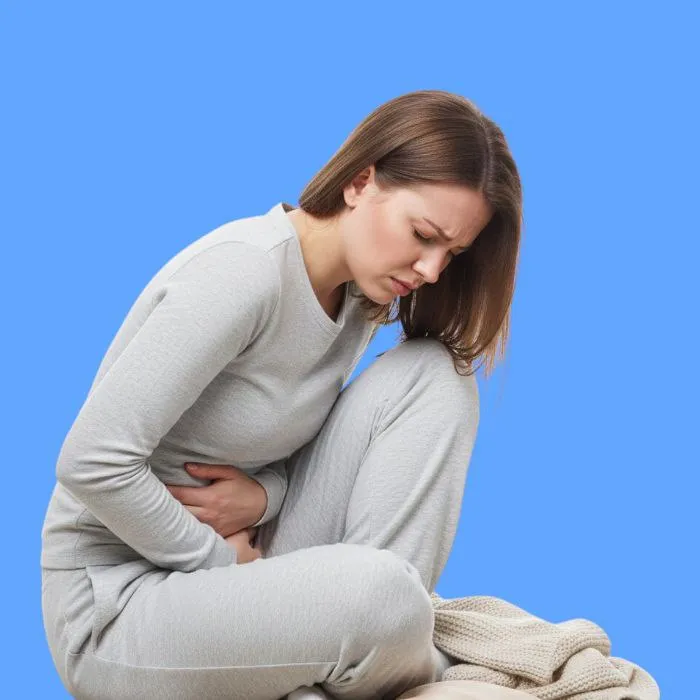What is dysmenorrhea?
Dysmenorrhea is one of the most common menstrual disorders among women. It refers to severe pain or cramps in the lower abdomen during menstruation.
The pain may be mild in some cases or severe enough to interfere with daily activities.
Dysmenorrhea is divided into two types: primary, which occurs without a clear organic cause, and secondary, which results from other diseases of the uterus or ovaries, such as endometriosis or fibroids.
What are the causes of dysmenorrhea?
Dysmenorrhea pain occurs as a result of a number of factors, including:
- Increased secretion of prostaglandins, which causes uterine contractions.
- Narrowing of the cervix, which hinders the easy flow of menstrual blood.
- Endometriosis.
- The presence of fibroids or cysts on the ovaries.
- Chronic pelvic inflammatory disease.
What are the common symptoms of dysmenorrhea?
Characteristic symptoms of dysmenorrhea include:
- Severe pain in the lower abdomen or back.
- Frequent cramps during menstruation. Headache or dizziness.
- Mild nausea or vomiting.
- Mood swings or fatigue.
What is the difference between primary and secondary dysmenorrhea?
The two types can be distinguished by the following signs:
Primary:
- Begins at puberty without an underlying medical cause.
- Decreases in severity with age or after childbirth.
Secondary:
- Appears later due to gynecological conditions.
- Persists and worsens over time.
- Requires a medical examination to determine the cause and receive treatment.
How is dysmenorrhea diagnosed?
Diagnosis relies on a range of medical tests, such as:
- Taking the patient's medical history and menstrual cycle details.
- Pelvic examination.
- Ultrasound (sonography).
- Blood tests to assess hormonal status.
- In some cases, hysteroscopy is used for accurate diagnosis.
What are the treatment options for dysmenorrhea?

Treatment methods vary depending on the severity and type of the condition and include:
- Using pain relievers such as ibuprofen. Take hormone replacement therapy pills or birth control pills.
- Apply warm compresses to your lower abdomen.
- Exercise regularly to improve blood flow.
- Treat the underlying medical cause in cases of secondary dysmenorrhea.
Can dysmenorrhea be managed?
Yes, it can be managed by adopting a healthy lifestyle and implementing some home remedies, such as:
- Getting enough sleep and avoiding stress.
- Eating foods rich in magnesium and calcium.
- Drinking plenty of water during your period.
- Reducing caffeine and fatty foods.
- Practicing meditation or yoga to relieve cramps.
What are the complications of dysmenorrhea?
In severe or neglected cases, some complications may occur, such as:
- Irregular menstrual cycles.
- Reduced fertility if there are underlying medical conditions.
- Chronic anxiety and stress.
- Absence from school or work due to pain.
- Sleep or appetite problems.
- Frequently Asked Questions about Dysmenorrhea
Is dysmenorrhea normal?
Pain may be normal if it is mild and does not interfere with daily activities, but severe pain requires medical attention.
Does dysmenorrhea affect fertility?
Primary dysmenorrhea does not affect fertility, but secondary dysmenorrhea associated with uterine conditions may affect the ability to conceive.
Can the pain be relieved naturally?
Yes, through warm compresses, adequate sleep, and stress reduction.
Article Summary
Dysmenorrhea is a common condition that can be easily managed with appropriate treatment and healthy habits.
Women should not ignore severe pain, as it may indicate a deeper problem requiring medical intervention.
Adhering to a healthy diet and exercising are among the most important ways to prevent and alleviate symptoms.